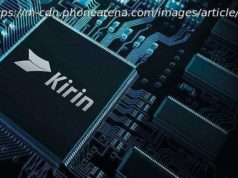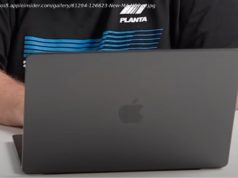From the first moment I held it, I knew the $1,980 Galaxy Fold would be something different, something special. It’s become painfully clear…
From the first moment I held it, I knew the $1,980 Galaxy Fold would be something different, something special. It’s become painfully clear that a foldable phone lives and dies by the quality of its bendable screen, center crease or no. It isn’t enough to see that display open and close — you have to feel it for yourself. Bending a screen is a visceral action that for me feels completely natural and right. And after doing everything from watching videos to reading the news to writing emails on the phone’s enormous 7.3-inch screen, you’ll never want to go back to « only » a 6-inch display again. The promise — and peril — of foldable phones is real.
Nobody expected the screens on some reviewers’ phones to malfunction so quickly, or for Samsung to postpone the Fold’s April 26 sale date for weeks — until June 13 for AT&T’s preorder buyers — while it investigated what went wrong. That sucked, because the incidents cast a pall over the Fold and over the concept of foldable phones in general. I’d been superexcited to be one of the first in the world to try the Fold, but the screen meltdown let all the air out of the balloon.
Because, as the first real phone of its kind, the Galaxy Fold is so important, and because of the alarming screen developments, I’ve taken my time making this evaluation as thorough as possible to avoid any knee-jerk reaction. We all deserve better than that. I’ve used the Fold every day for more than a week in every way a person can use a phone, even (gasp!) to make calls. I ran two overnight battery drain tests, peered at its screen from every angle, and typed until my hands ached.
Although the early production review unit Samsung gave me never so much as flickered, CNET will hold off giving the device an official rating until we’ve fully tested a final production Galaxy Fold. The fact that the Fold has now suffered five screen meltdowns before it even reached customers’ hands concerns me deeply.
That Samsung somehow missed proper quality control before releasing this device will stir up memories of the Galaxy Note 7 battery flame-out. If reviewers hadn’t caught the screen problems on the Fold, a lot of unhappy customers might have shelled out $2,000 for a device that gives more headaches than glimpses of the future. And of course we have to wonder how this will affect other foldable phones, such as the Huawei Mate X and the (rumored) foldable Moto Razr. Will the true foldable revolution stall a few years while waiting for Corning’s bendable glass?
I should mention that Samsung is retrieving all review units. Though it’s likely the company wants to do some damage control before more issues develop, reviewers were also told at the outside that we’d have a limited, 10-day review period before having to give the phones back.
Read more: The Galaxy Fold’s screen malfunction: Everything you need to know
After a week, I’m still divided about the Fold. The world doesn’t need foldable phones. We can get along perfectly fine without them. But we should want them — not as the Fold is now, but as it could be. I hope the Fold’s early misfortunes don’t deter Samsung and others from trying again. The brand is already rumored to be at work on two more separate designs. Maybe one of those will stick.
The Fold’s screen problems, while important, distract us from evaluating where this device works well and where it doesn’t. We need to be able to let the drama settle and really look at what the Fold has to offer. So that’s what I’m going to do.
Let’s agree that the Galaxy Fold is a testbed device for developers and the earliest adopters to buy, and for the rest of us to ponder over — and then let’s put that aside and dive into the details. Are you with me?
The entire purpose of a foldable phone is to give you an expansive, uninterrupted display to watch videos, play games and read on, then put away in your pocket.
Companies have made foldable phone concept sketches and prototypes for years, but the Galaxy Fold marks the first time there’s been enough critical mass in interest and technological know-how to make a commercial device possible. Samsung isn’t alone. Huawei’s Mate X and TCL’s commitment to a future foldable are making this new bendable design more real every day.
Even Google’s in on the action, pledging Android support so that its software will switch from one screen orientation to another as you fold and unfold the display. A little-known company sold the first foldable phone, the Royole FlexPai, but Samsung’s Fold is the first « real » foldable phone for most people.
If Samsung and its rivals can fix major problems that the Fold is seeing now, and enough people wind up clamoring for the design, then foldable phones have a chance to change the way people use their devices. A foldable phone could one day make tablets obsolete.
Read more: Galaxy Fold pains could help other foldable phones succeed
The Galaxy Fold has two screens, but it’s the 7.3-inch inner display that’s your real living space. While you get chemically hardened Gorilla Glass on the outside, this inner screen is made from plastic, not glass — because we don’t have bendable glass yet. That means the screen’s about as soft and tender as a young shoot, and just as easily mangled.
My review unit is still 100% usable, without bumps or distortion, but if you look at it closely, over on the left side there’s a small divot. You can see it clearly in our review video. I’m not even sure when it happened, but it does speak to the fragility of this type of design.
The Fold looks and feels premium on the outside when closed up tight, thanks to glossy glass surfaces, luminous color and a gleaming, dressed-up hinge. Samsung had to go this route to justify the phone’s high price. A magnetic closure helps the Fold feel securely battened down.
But when you open it up, the interior feels and looks toylike, with plastic bezels and a large notch to match the plastic screen.
The plastic film that’s caused such a ruckus is only one problem. Two reviewers took it off (I thought about doing so myself), which caused the screen to immediately malfunction. Samsung later said it’s not a screen guard, but an integral part of the phone’s structure. With a thin border between this protective layer and those plastic bezels, it’s hard to tell — there’s enough room to easily slide in a fingernail or tool to give this film a tug.
Another bother is the dust and lint that like to collect in this gap. More worrisome, perhaps, are small twin openings between the screen and the hinge, one on either pole when the Fold is open. You can see how something could work its way in there.
On the bright side, opening and closing the Fold feels awesome. The Fold is a phone you have to understand on a physical level that words and photos don’t do justice to. You have to feel how much force you need to throw into it to close the device and open it again. To gauge the smoothness of that big hinge as the « wings » open and close. It isn’t hard, but you do need to be deliberate, and I like the little bit of exertion the Fold demands from you. And that clack when it does close! Extremely satisfying.
It’s not just me that thinks this. I’ve passed the Galaxy Fold around to co-workers, friends, perfect strangers craning to get a look — even my septuagenarian parents — and you can see their faces light up the first time they bend and unbend the screen.
Home
United States
USA — IT Galaxy Fold review: Samsung's new phone shows the promise and peril of...






